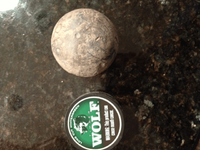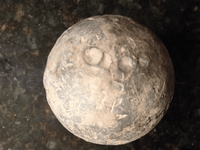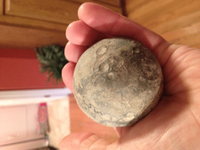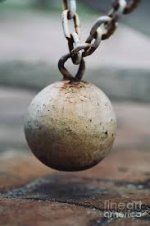EC.Mason
Hero Member
- Feb 6, 2009
- 674
- 1,041
- Detector(s) used
- Garrett AT Max
- Primary Interest:
- All Treasure Hunting
I found this today at an old house. It is close to some Civil War activity. It is very heavy and made of lead. It was only about five or six inches deep. I thought maybe it was a shot put, but the man that owns the property and grew up in the old home says he never even heard of a shot put, nor have I heard of it being done in this county. There used to be an even older log home that set on the same site. Any help would be appreciated.











